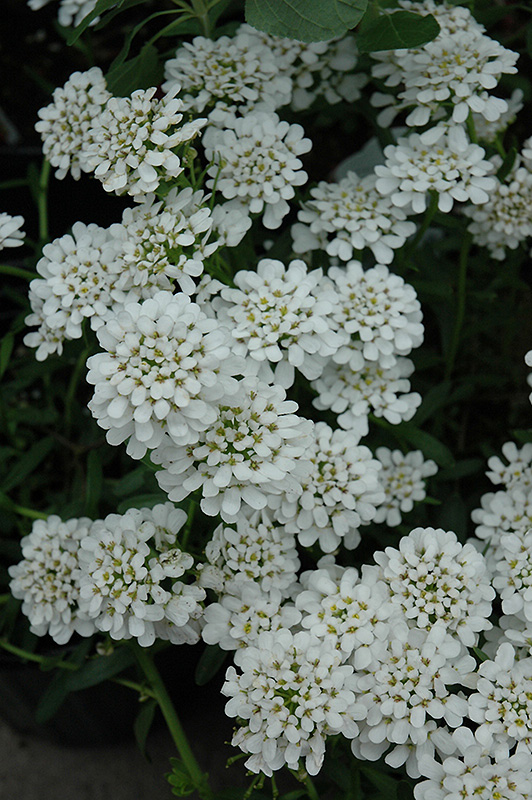Alexander White Candytuft
Iberis sempervirens 'Alexander White'
Height: 10 inches
Spacing: 18 inches
Sunlight:
![]()
![]()
Hardiness Zone: 2
Description:
Bright, white flowers bloom in clusters on evergreen, compact plant. Trim after blooming. Nice cut flower. Plant in sun/part shade. Blooms in Apr-May.
Ornamental Features
Alexander White Candytuft is smothered in stunning white flowers at the ends of the stems from mid to late spring. The flowers are excellent for cutting. Its narrow leaves remain green in color throughout the year.
Landscape Attributes
Alexander White Candytuft is an herbaceous evergreen perennial with a ground-hugging habit of growth. It brings an extremely fine and delicate texture to the garden composition and should be used to full effect.
This is a relatively low maintenance plant, and should only be pruned after flowering to avoid removing any of the current season's flowers. It has no significant negative characteristics.
Alexander White Candytuft is recommended for the following landscape applications;
- Mass Planting
- Rock/Alpine Gardens
- Border Edging
- General Garden Use
- Groundcover
Planting & Growing
Alexander White Candytuft will grow to be about 10 inches tall at maturity, with a spread of 24 inches. When grown in masses or used as a bedding plant, individual plants should be spaced approximately 18 inches apart. Its foliage tends to remain low and dense right to the ground. It grows at a medium rate, and under ideal conditions can be expected to live for approximately 10 years. As an evegreen perennial, this plant will typically keep its form and foliage year-round.
This plant does best in full sun to partial shade. It is very adaptable to both dry and moist growing conditions, but will not tolerate any standing water. It may require supplemental watering during periods of drought or extended heat. It is not particular as to soil type or pH. It is highly tolerant of urban pollution and will even thrive in inner city environments. Consider applying a thick mulch around the root zone in both summer and winter to conserve soil moisture and protect it in exposed locations or colder microclimates. This is a selected variety of a species not originally from North America.

